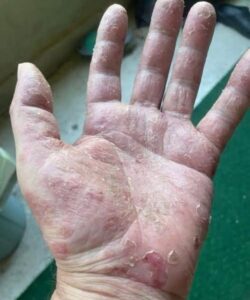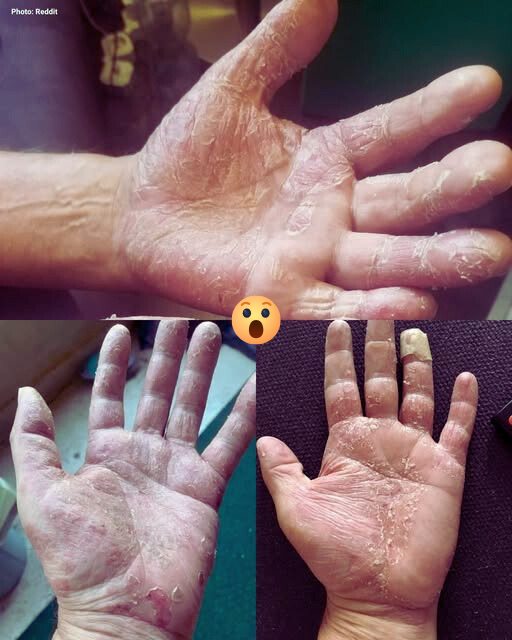As we grow older, the skin on our hands can become noticeably more delicate and reactive. What many people mistake for ordinary dryness may actually be a medical condition known as hand dermatitis or hand eczema. This issue affects millions of individuals across the world and can cause a range of uncomfortable symptoms — from persistent redness and rough patches to cracking skin, intense itching, and even bleeding. These symptoms can be so disruptive that they interfere with daily activities, like household tasks or simply washing hands.
Causes and Triggers
Hand dermatitis forms when the natural protective barrier of the skin becomes weakened or damaged. Once compromised, the skin becomes far more vulnerable to irritation. A number of everyday factors can trigger flare-ups, including:
- Frequent exposure to soaps, cleaning products, and harsh detergents
- Excessive handwashing or sanitizing
- Allergies to certain substances
- Pre-existing skin conditions such as eczema or psoriasis
- Environmental influences like very cold or very dry weather
- These irritants slowly wear down the skin’s defenses, making inflammation and discomfort much more likely.

Symptoms
The condition often reveals itself through several recognizable signs. People may notice:
- Redness and visible inflammation
- Peeling or flaking skin
- Painful cracks that may bleed
- Persistent itching or a burning sensation
- Areas of skin that become thickened over time
If left untreated, the irritation can worsen and lead to bacterial infection, especially if cracked skin creates openings for germs to enter.
Treatment & Care Options
The good news is that hand dermatitis can be managed effectively with proper care. Many people experience relief by adopting supportive habits such as:
- Applying thick, deeply hydrating moisturizers without fragrance every day, especially after washing hands
- Wearing protective gloves while doing household chores or handling chemicals
- Using gentle, soap-free cleansers that do not strip the skin
- Consulting a healthcare provider for prescription creams if symptoms are more severe
- Considering advanced treatments, such as light therapy or other medical interventions, for chronic or stubborn cases
- Consistency is key — regular protection and gentle care help restore the skin’s moisture barrier.
When to Seek Medical Attention
It’s important to consult a doctor or dermatologist if the symptoms begin to interfere with daily life, fail to improve after using moisturizers or over-the-counter products, or show warning signs of infection like increased pain, pus, or spreading redness.

Living With Hand Dermatitis
Beyond the physical discomfort, this condition can take an emotional toll, particularly on older adults who may already struggle with mobility or independence. The pain and irritation can make even simple tasks feel overwhelming. However, with the right combination of treatment, precautionary habits, and ongoing skin care, hand dermatitis can be kept under control. This allows the hands to remain functional, more comfortable, and able to continue performing all the important roles they play in everyday life.